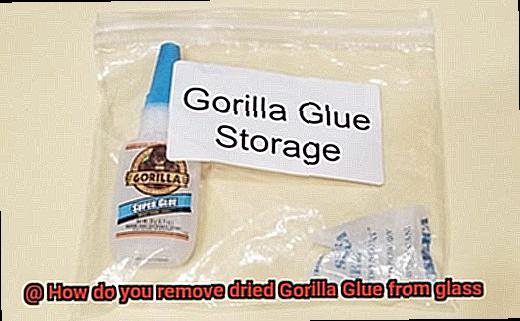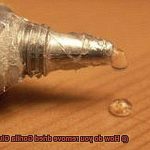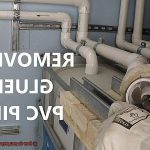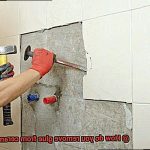Ever found yourself in a sticky situation with dried Gorilla Glue clinging stubbornly to your beloved glass items? Whether it’s a beautiful vase, a cherished picture frame, or a delicate ornament, dealing with this adhesive nightmare can be downright frustrating. But fear not, my fellow glue enthusiasts. In this blog post, I’ll spill the beans on four tried-and-true methods that will have you saying goodbye to dried Gorilla Glue and hello to flawless glass surfaces. Get ready to restore the beauty of your glass treasures in no time.
Hook:
Picture this: you’ve just finished creating an exquisite stained glass masterpiece when you notice that remnants of Gorilla Glue are stealing the spotlight from its brilliance. Don’t let that happen. With these expert tips and tricks up your sleeve, restoring the pristine beauty of your glass creations is as easy as 1-2-3.
Main Points:
- Heat It Up: Unleash the power of heat. Grab your trusty hairdryer or heat gun and gently warm up the dried Gorilla Glue. As it softens, you can easily peel it off without damaging the glass. Just remember to be patient and handle with care.
- Acetone Magic: Say hello to your secret weapon – acetone. This powerful chemical dissolves Gorilla Glue like magic while leaving your glass unscathed. Just make sure to work in a well-ventilated area and follow safety precautions for a successful glue removal mission.
- Vinegar Soak: Who knew vinegar could come to the rescue? Soak your glued glass in warm vinegar and watch as it works its wonders on loosening that pesky Gorilla Glue. A little scrubbing may be required, but the mild acidity of vinegar helps break down those stubborn adhesive bonds.
- Razor Blade Precision: Sometimes, all you need is the finesse of a razor blade. Perfect for those hard-to-reach areas or scraping off small patches of glue, a razor blade can be your best friend in achieving that smooth finish you desire.
Armed with these four foolproof methods, it’s time to bid farewell to dried Gorilla Glue and restore the brilliance of your glass treasures. Remember, glass deserves our utmost care, so take your time and proceed with caution. Stay tuned for our step-by-step guide on achieving flawless glass restoration.
What is Gorilla Glue and How Does it Work?
Contents
- 1 What is Gorilla Glue and How Does it Work?
- 2 Heat and Scraping Method
- 3 Acetone Method
- 4 Natural Alternatives to Acetone
- 5 Adhesive Removers
- 6 Tips for Removing Dried Gorilla Glue from Glass
- 7 Pros and Cons of Different Removal Methods
- 8 Common Mistakes to Avoid When Removing Gorilla Glue from Glass
- 9 Conclusion
When it comes to tackling tough projects, Gorilla Glue is the adhesive of choice. Renowned for its exceptional strength and durability, this popular adhesive is a staple in the world of DIY. But what exactly is Gorilla Glue and how does it work? Let’s unravel the mysteries of this remarkable adhesive.
Gorilla Glue’s secret lies in its polyurethane formula, which sets it apart from other adhesives on the market. This unique formula is the key to its incredible holding power, allowing it to form bonds that are virtually unbreakable. When applied to a surface, Gorilla Glue reacts with moisture in the air and expands, resulting in a bond that can withstand tremendous force.
To achieve optimum results with Gorilla Glue, cleanliness is crucial. Surfaces must be clean, dry, and free from any dust or debris to ensure proper adhesion. Whether you’re working with wood, metal, plastic, ceramic, stone, or glass, Gorilla Glue can bond them all. Its versatility knows no bounds.
Gorilla Glue comes in various forms to suit different applications. Liquid glue offers excellent coverage and is perfect for larger surfaces. Gel glue provides more control and precision for smaller projects. And super glue delivers instant bonding strength for quick fixes and repairs.
Using Gorilla Glue is a breeze. Simply apply a thin layer of the adhesive to one surface and press the two surfaces firmly together. It’s essential to clamp or hold the bond in place for at least 1-2 hours to ensure proper curing. This allows the glue to expand fully and create an unyielding bond that can withstand even the harshest conditions.
Once cured, Gorilla Glue forms a bond that is impervious to water and temperature changes. Whether you’re using it indoors or outdoors, rest assured that your project will stay securely in place. However, be mindful of the glue’s expanding nature during the curing process and use it sparingly to avoid excess glue oozing out of the bond.
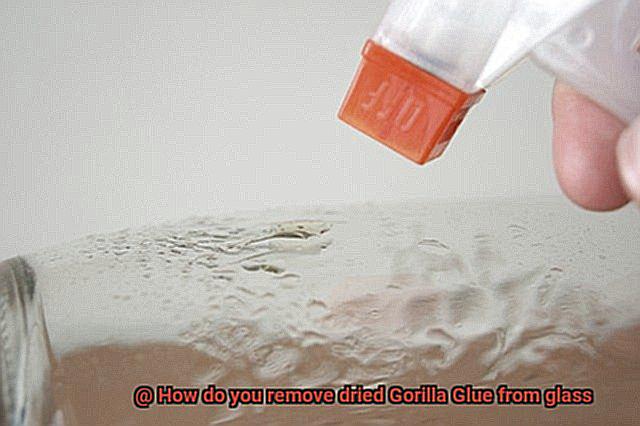
In the unfortunate event of spills or drips, immediate action is crucial. Wipe off any excess glue with a damp cloth or sponge before it dries. This prevents unsightly residue from marring the final result of your project.
Heat and Scraping Method
Fear not, for I am here to reveal a powerful secret: the heat and scraping method. In this captivating guide, we will delve into the art of effectively using heat and scraping to bid farewell to that pesky glue on your glass surfaces. So, grab your tools and let’s embark on this adhesive removal adventure.
Gather your arsenal:
To conquer the challenges of glue removal, you must first equip yourself with the necessary tools. Prepare a hairdryer or a heat gun, a trusty plastic scraper or an old credit card, some rubbing alcohol, and a soft cloth or cotton ball. With these weapons of choice in hand, you are ready to face the daunting task ahead.
Unleash the power of heat:
Once armed with your chosen heat source, direct it towards the dried Gorilla Glue on your glass surface. Position the heat source a few inches away and bathe the glue in its warmth for several minutes. Behold as the glue succumbs to the enchanting spell of heat, softening and becoming more pliable.
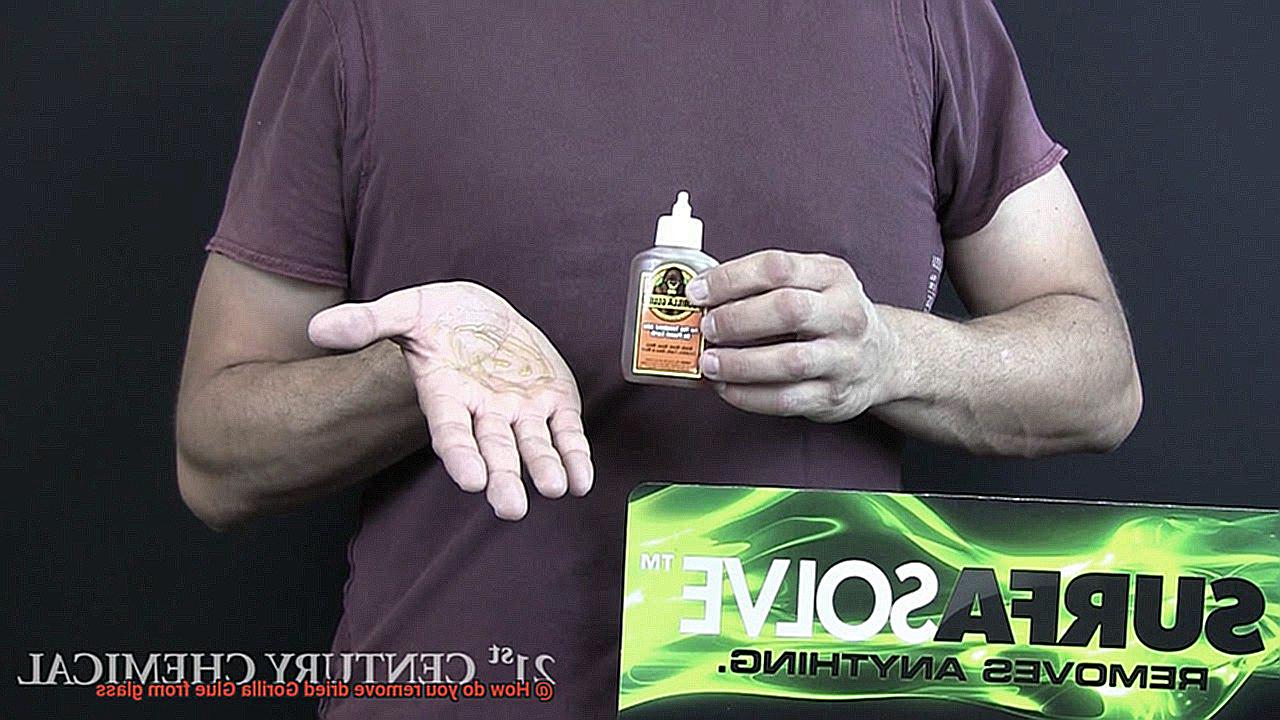
Gentle strokes of freedom:
With the glue now malleable, take hold of your plastic scraper or old credit card. Employ graceful strokes and a gentle touch as you delicately scrape away the softened adhesive from the glass surface. Remember to adjust the angle of the scraper slightly and exert just enough pressure to lift off the glue without leaving a mark.
Persistence pays off:
In rare instances when some residue lingers after scraping, do not despair. Persevere with determination by repeating the process of heating and scraping until every last trace of Gorilla Glue is vanquished from your glass surface. Patience and persistence are the keys to victory.
Unleash the lubricant:
For an added boost in loosening the adhesive grip, introduce rubbing alcohol to the battlefield. Soak a cloth or cotton ball in this magical elixir and place it over the glue before applying heat. Allow the alcohol to work its alchemical wonders for a few minutes, dissolving or weakening the glue’s hold. Then, resume the heating and scraping method to complete the conquest.
Acetone Method
Fear not, brave adhesive warriors. Today, we unveil the extraordinary might of the Acetone Method, an unrivaled technique that bids farewell to relentless glue. So don your gloves and goggles, and let the adhesive removal adventure begin.
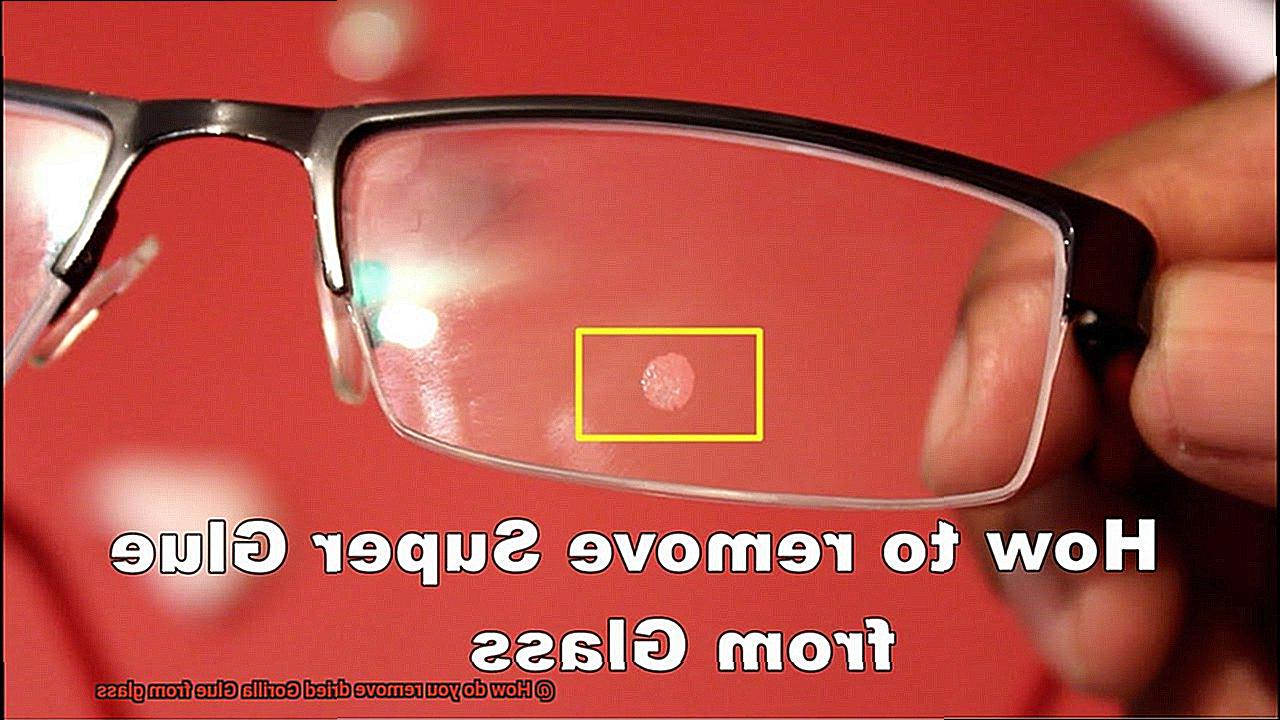
The Mighty Acetone Method:
Prepare to witness the prowess of the Acetone Method, a battle-tested approach for banishing dried Gorilla Glue from glass surfaces. Armed with acetone, a potent solvent commonly found in nail polish removers and paint thinners, this method breaks down the glue’s chemical bonds, rendering it effortlessly removable without harming your precious glass.
Safety First, Always:
Before we delve into the mesmerizing world of the Acetone Method, let us emphasize safety. Remember, acetone is highly flammable and can pose hazards if it comes into contact with your skin or eyes. Hence, don your protective gloves and goggles before embarking on this adhesive removal escapade. Safety reigns supreme.
Step 1: Prepare and Soak:
Equip yourself with essential tools – a clean cloth or sponge, acetone, and warm soapy water. Begin by immersing the cloth or sponge in warm soapy water and gently scrubbing the dried Gorilla Glue on the glass surface. This initial step helps loosen any loose or surface-level glue particles.
Step 2: Unleash Acetone’s Magic:
Now it’s time to unleash the enchanting power of acetone. Pour a small amount onto the cloth or sponge and apply it directly to the dried Gorilla Glue. Let this remarkable solvent sit on the glue for a few minutes, allowing it to penetrate and dissolve the adhesive. Behold as acetone performs its mystical art, transforming your adhesive removal task into a breeze.
Step 3: Gentle Scrubbing:
Once acetone has completed its alchemical work, take up a clean cloth or sponge and delicately scrub away the dissolved glue. Employ circular motions and apply gentle pressure to prevent any scratches on the glass surface. Repeat this process until every last trace of dried Gorilla Glue vanishes into thin air, leaving your glass gleaming.
Natural Alternatives to Acetone
Acetone may be the traditional solution, but if you’re concerned about its harshness and potential health effects, fear not. In this article, we will explore some captivating natural alternatives to acetone that will banish that pesky glue goo from your glass surfaces. Prepare to be amazed as we delve into the world of vinegar, lemon juice, rubbing alcohol, baking soda and coconut oil, olive oil, and even commercial adhesive removers made from natural ingredients.
Vinegar – The Gentle Acidic Wonder:
Step into your kitchen and grab that bottle of vinegar. This mild acid is a true superhero when it comes to breaking down dried glue on glass surfaces. Simply soak a cloth or sponge in vinegar and apply it to the glue. Allow it to work its magic for a few minutes, then unleash your gentle scrubbing skills with a soft brush or cloth. Rinse with water, and watch the glue disappear like magic. It’s time for vinegar to take its rightful place among your cleaning arsenal.
Lemon Juice – The Citric Acid Savior:
Lemons are not just for refreshing beverages; they also possess the power to dissolve dried glue from glass surfaces. Squeeze some fresh lemon juice onto the affected area and let it sit for a few minutes. Armed with a trusty cloth or sponge, scrub away that stubborn glue with determination. Rinse with water, and witness the transformative power of citric acid as your glass surfaces regain their pristine glory.
Rubbing Alcohol – The Milder Yet Effective Solvent:
If you seek a natural alternative that strikes the perfect balance between gentleness and effectiveness, look no further than rubbing alcohol. Moisten a cloth or cotton ball with this multitasking wonder and apply it to the dried glue. Let it work its magic for a few minutes before unleashing your gentle scrubbing skills with a soft brush or cloth. Rinse with water, and say goodbye to that adhesive residue without compromising on your health or the environment.
Adhesive Removers
Prepare to bid farewell to adhesive mishaps. When that dreaded Gorilla Glue infiltrates your pristine glass surface, fear not. Harness the power of adhesive removers and watch as that stubborn glue vanishes like magic. In this compelling guide, we’ll delve into the captivating world of adhesive removers, equipping you with the knowledge needed to conquer dried Gorilla Glue on glass surfaces.
Types of Adhesive Removers:
Solvent-based Removers:
Unleash the might of these superheroes, tailor-made to conquer tough adhesives like Gorilla Glue. Infused with potent solvents, they obliterate adhesive bonds, simplifying the process of waving goodbye to sticky situations.
Citrus-based Removers:
For those seeking a gentler touch, citrus-based removers come to the rescue. Harnessing the natural power of orange oil or lemon extract, these removers offer a milder alternative for delicate surfaces such as glass.
Gel Removers:
Picture a loyal friend who clings steadfastly – that’s precisely what gel adhesive removers do. Their thickened formulas adhere to vertical surfaces, granting them extra time to dissolve adhesive bonds before being effortlessly wiped away.
Step-by-Step Guide: Removing Dried Gorilla Glue from Glass
Test the Waters:
Before embarking on the removal journey, exercise caution by testing your chosen adhesive remover on a discreet area of the glass surface. This preliminary step ensures that no harm or discoloration befalls your precious glass.
Apply and Await:
Apply a liberal amount of your selected adhesive remover directly onto the dried Gorilla Glue. Allow it a few moments to weave its magic and penetrate the stubborn adhesive bonds. The required waiting time varies depending on the specific remover employed.
Scrape with Care:
Once the remover has completed its mission, arm yourself with a plastic scraper or a soft cloth. With gentle strokes, scrape away the softened glue, taking care not to mar the glass surface. Our aim is to restore its dazzling gleam, not leave behind unsightly marks.
Repeat the Ritual:
Should traces of Gorilla Glue persist, remain steadfast. Repeat the process until every last vestige of the adhesive has surrendered to your determined efforts.
Tips for Removing Dried Gorilla Glue from Glass
Removing dried Gorilla Glue from glass can feel like an uphill battle, but fear not. With a little finesse and the right strategies, you’ll have that stubborn glue waving the white flag in no time. Just remember to proceed with caution and equip yourself with the necessary safety gear. Get ready to conquer the challenge with these expert tips. Let’s dive in.
Caution First, Glue Last:
Before diving into the removal process, it’s crucial to prioritize caution and protect yourself. Arm yourself with gloves to shield your hands from any potential irritants and safety goggles to safeguard your eyes from rogue glue bits. Remember, safety is a priority.
Heat, the Glue’s Nemesis:
Harness the power of heat to soften the grip of dried Gorilla Glue on glass. Grab your trusty hairdryer or heat gun and aim the scorching air directly at the glue. Patience is your ally here, as it may take some time for the glue to yield. Once softened, unleash a plastic scraper or credit card to gently scrape away the softened glue. Victory is within reach.
Acetone Unleashed:
When it comes to dissolving dried Gorilla Glue, acetone takes center stage. Seek out pure acetone, readily available at hardware stores or beauty supply shops. Dab a cotton ball or cloth with a small amount of acetone or nail polish remover. Massage the glue gently in circular motions, avoiding excessive force that could harm the glass surface. Ensure proper ventilation and test on a small area first to ensure compatibility.
Vinegar’s Acidic Sorcery:
If you prefer a natural approach, vinegar holds the key to unlocking dried Gorilla Glue on glass. Create a potent concoction by mixing equal parts vinegar and water in a spray bottle. Spritz the mixture onto the glue, letting it soak for a few minutes while the vinegar’s acidic properties work their magic. Armed with a plastic scraper or credit card, gently scrape away the softened glue. The battle is won.
Rubbing Alcohol, the Mighty Alternative:
When all else fails, rubbing alcohol stands ready as an alternative solvent to dissolve dried Gorilla Glue. Immerse a cloth or cotton ball in rubbing alcohol and apply it to the glue. Allow it to sit for a few minutes, then unleash your trusty plastic scraper or credit card to gently scrape off the softened glue. Witness the might of rubbing alcohol.
Remember, patience reigns supreme when battling dried Gorilla Glue on glass. Take your time, proceed with caution, and be mindful of the surface to avoid any unwanted damage. Once you’ve triumphed over the glue, celebrate by giving the glass a thorough cleaning with warm soapy water to erase any lingering residue and restore its captivating shine.
Pros and Cons of Different Removal Methods
I’m here to equip you with the pros and cons of different removal methods, so you can conquer that glue with finesse. Let’s dive in.
- Acetone: One of the most commonly recommended methods is using acetone. Pros? Acetone is a powerful solvent that effectively dissolves the glue, and it’s readily available in most households or hardware stores. However, be cautious as acetone can damage the glass if not used carefully. And let’s not forget about its strong odor – make sure to use it in a well-ventilated area.
- Vinegar: If you prefer a natural approach, vinegar is your ally. Pros? Vinegar is non-toxic and can be found in most households. It’s generally safe to use on glass surfaces without causing damage. However, vinegar may not be as effective as other methods, requiring multiple applications or soaking to fully remove the glue.
- Heat: Time to unleash the superpower of heat. Applying heat can soften the grip of dried Gorilla Glue on glass. Pros? Heat is easily accessible using a hairdryer or hot water, and it’s quite effective in loosening the glue bond. But beware – excessive heat can damage the glass surface or even cause cracking. So handle that heat with care.
- Sanding or scraping: For those tough layers of glue, sanding or scraping might be necessary. Pros? This method can be effective for thicker layers of glue and doesn’t require additional chemicals. However, be cautious – sanding or scraping can be time-consuming and labor-intensive. Plus, if you’re not careful, you risk scratching or damaging your precious glass.
- Commercial adhesive removers: Let’s unveil the secret weapons in your arsenal – commercial adhesive removers designed specifically for tough adhesives like Gorilla Glue. Pros? These products contain solvents that break down the glue, making removal easier. If you’re looking for a hassle-free solution, this might be your best bet.
Common Mistakes to Avoid When Removing Gorilla Glue from Glass
Now that we’ve equipped you with a range of methods to conquer dried Gorilla Glue on glass, let’s dive into the treacherous realm of common mistakes you must steer clear of during this epic battle. Our ultimate goal? To ensure you emerge victorious without any casualties or damage. So, prepare yourselves and let’s explore the crucial missteps to avoid when removing Gorilla Glue from glass.
First and foremost, let’s address the peril of excessive force and scraping tools. Glass, my friends, is an exquisite material that demands delicate treatment. Applying too much pressure or wielding sharp objects can result in unfortunate scratches or, worse yet, the shattering of your precious glass surface. Remember, a gentle touch and unwavering patience are your allies in this quest.
Now, onto the next pitfall: heedless usage of harsh chemicals or solvents without proper knowledge or guidance. We certainly don’t want your glass to suffer from unsightly discoloration or irreversible damage. Exercise caution and wisdom by conducting a small-scale test on an inconspicuous area before embarking on a full-scale chemical assault. Remember, safety should always reign supreme.
Ah, the siren song of heat as a removal method. While it may seem enticing to utilize its powers to soften the glue and make it easier to vanquish, tread carefully. Exposing your glass to excessive heat can trigger thermal stress, leading to hairline cracks or even catastrophic shattering. Keep that heat source at a safe distance and embrace lower heat settings with unwavering vigilance. We shall not allow any harm to befall our beloved glass.
Let us not overlook the importance of safeguarding your surroundings. When waging war against Gorilla Glue on glass, it is imperative to protect adjacent surfaces from potential collateral damage caused by your chemical concoctions or scraping arsenal. A simple solution: enshroud these areas with the protective embrace of plastic wrap or the steadfast grip of masking tape. Shield, fortify, and conquer.
Last but never least, a cautionary tale against the perils of haste. I understand the burning desire to liberate your glass from that stubborn glue, but heed my words: patience is your greatest weapon. Rushing through the removal process can result in incomplete eradication or, worse yet, inflict further harm upon your cherished glass surface. Embrace a methodical approach, follow the proper steps, and savor the sweet taste of success.
5rLRekxJbco” >
Conclusion
Removing dried Gorilla Glue from glass can be a frustrating task, but fear not.
There are effective methods that can come to your rescue. One option is to use acetone, a powerful solvent that can dissolve the adhesive.
Simply soak a cotton ball or cloth in acetone and gently rub it on the glue until it starts to loosen. Another method involves using a mixture of warm water and dish soap.
Soak the affected area in this solution for about 15 minutes, then carefully scrape off the softened glue with a plastic scraper or your fingernail. For stubborn residue, you can try using a razor blade at a low angle to gently lift it off the glass surface.
After removing the glue, clean the glass thoroughly with glass cleaner to restore its shine.

